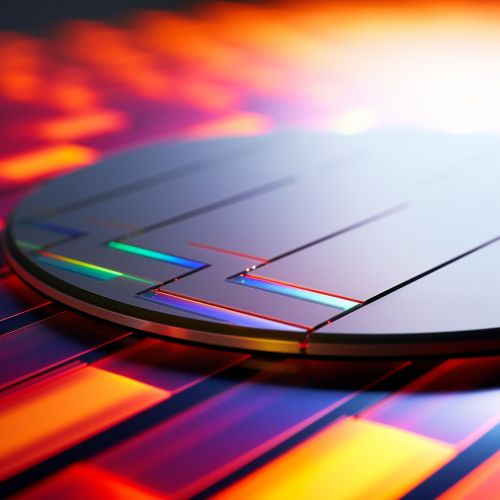Silicon germanium
Introduction
Silicon germanium (SiGe) is a semiconductor alloy material that combines the properties of silicon and germanium. It is a significant material in the field of microelectronics and nanotechnology, offering a range of benefits over pure silicon, including higher mobility of electrons and holes, lower operating voltages, and the ability to function at higher frequencies.


History
The first attempts to create silicon germanium alloys were made in the 1960s, but it was not until the 1980s that the material began to be seriously considered for use in microelectronics. The development of SiGe technology was driven by the need for higher performance semiconductors, as the limitations of pure silicon began to become apparent.
Properties
Silicon germanium has a number of properties that make it an attractive material for use in semiconductors. These include:
Electrical Properties
SiGe has higher carrier mobility than pure silicon, which means that it can operate at higher frequencies. This makes it particularly useful in high-speed applications such as radio-frequency (RF) devices.
Thermal Properties
Silicon germanium has a lower thermal conductivity than silicon, which means that it can operate at higher temperatures without degrading. This makes it useful in applications where high temperature operation is required.
Mechanical Properties
SiGe has a similar crystal structure to silicon, which makes it compatible with existing silicon-based fabrication processes. However, it also has a higher mechanical strength than silicon, which makes it more resistant to damage during processing.
Applications
Silicon germanium is used in a variety of applications, including:
Microelectronics
In the field of microelectronics, SiGe is used in high-speed transistors, where its high carrier mobility allows it to operate at higher frequencies than pure silicon. It is also used in photodetectors, where its wider bandgap allows it to detect a wider range of wavelengths.
Nanotechnology
In nanotechnology, SiGe is used in the fabrication of quantum dots, which are tiny semiconductor particles that have quantum mechanical properties. SiGe quantum dots have potential applications in quantum computing and quantum communication.
Optoelectronics
In optoelectronics, SiGe is used in the fabrication of light-emitting diodes (LEDs) and laser diodes. Its wider bandgap allows it to emit light at a wider range of wavelengths than pure silicon.
Future Prospects
The use of silicon germanium in microelectronics and nanotechnology is expected to continue to grow in the future, as the demand for higher performance semiconductors continues to increase. In particular, the development of SiGe-based quantum dots could open up new possibilities in the field of quantum computing and quantum communication.
